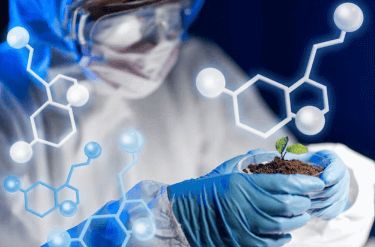Question
a.
Very easily degradable
b.
Easily degradable
c.
Potentially degradable
d.
Very fast degradable
Posted under Environmental Biotechnology
Interact with the Community - Share Your Thoughts
Uncertain About the Answer? Seek Clarification Here.
Understand the Explanation? Include it Here.
Q. Which of the following is not a subdivision of degradability of pollutants?
Similar Questions
Explore Relevant Multiple Choice Questions (MCQs)
Q. Which the following doesn’t come under the category of very easily degradable compounds?
View solution
Q. Very easily degradable pollutant can be degraded by direct metabolism by bacteria.
View solution
Q. What of the following biological organisms cannot be used to degrade very easily degradable pollutants?
View solution
Q. Which of the following methods is not used to degrade easily degradable pollutant?
View solution
Q. Artificial inoculation is a degradation requirement in potentially degradable pollutants.
View solution
Q. Additional substrate requirement is there along with artificial inoculation to degrade very slowly degradable pollutants.
View solution
Q. The residence time of easily degradable pollutants in the environment ranges from ___________
View solution
Q. ____________ process is the main pathway for degradation of bioorganic compounds.
View solution
Q. Anabolic processes of microorganisms help in the decomposition of bioorganic or organic compounds.
View solution
Q. __________ of some xenobiotic can be traced back to a biological origin.
View solution
Q. Which of the following return to the carbon cycle after incineration?
View solution
Q. Stripping of carbon dioxide is necessary to prevent a drop in pH and _______
View solution
Q. Molecular oxygen available in the environment helps to degrade plant biomass to carbon dioxide and ___________
View solution
Q. Which of the following helps to hydrolyze the macromolecules?
View solution
Q. The exo enzyme __________ to the bio polymers.
View solution
Q. Which of the following is the central intermediate of almost all the metabolism?
View solution
Q. When carbohydrates are respired by aerobic bacteria, almost one third of initial energy is lost.
View solution
Q. The conserved energy in the phosphanhydride bond of ATP is partially used for cell multiplication and ___________
View solution
Q. The places where the molecular oxygen is deficient but the organic matter content is high, degradation occurs __________
View solution
Q. In absence of inorganic electron acceptor, the oxidized metabolite is reduced to ___________
View solution
Recommended Subjects
Are you eager to expand your knowledge beyond Environmental Biotechnology? We've handpicked a range of related categories that you might find intriguing.
Click on the categories below to discover a wealth of MCQs and enrich your understanding of various subjects. Happy exploring!








